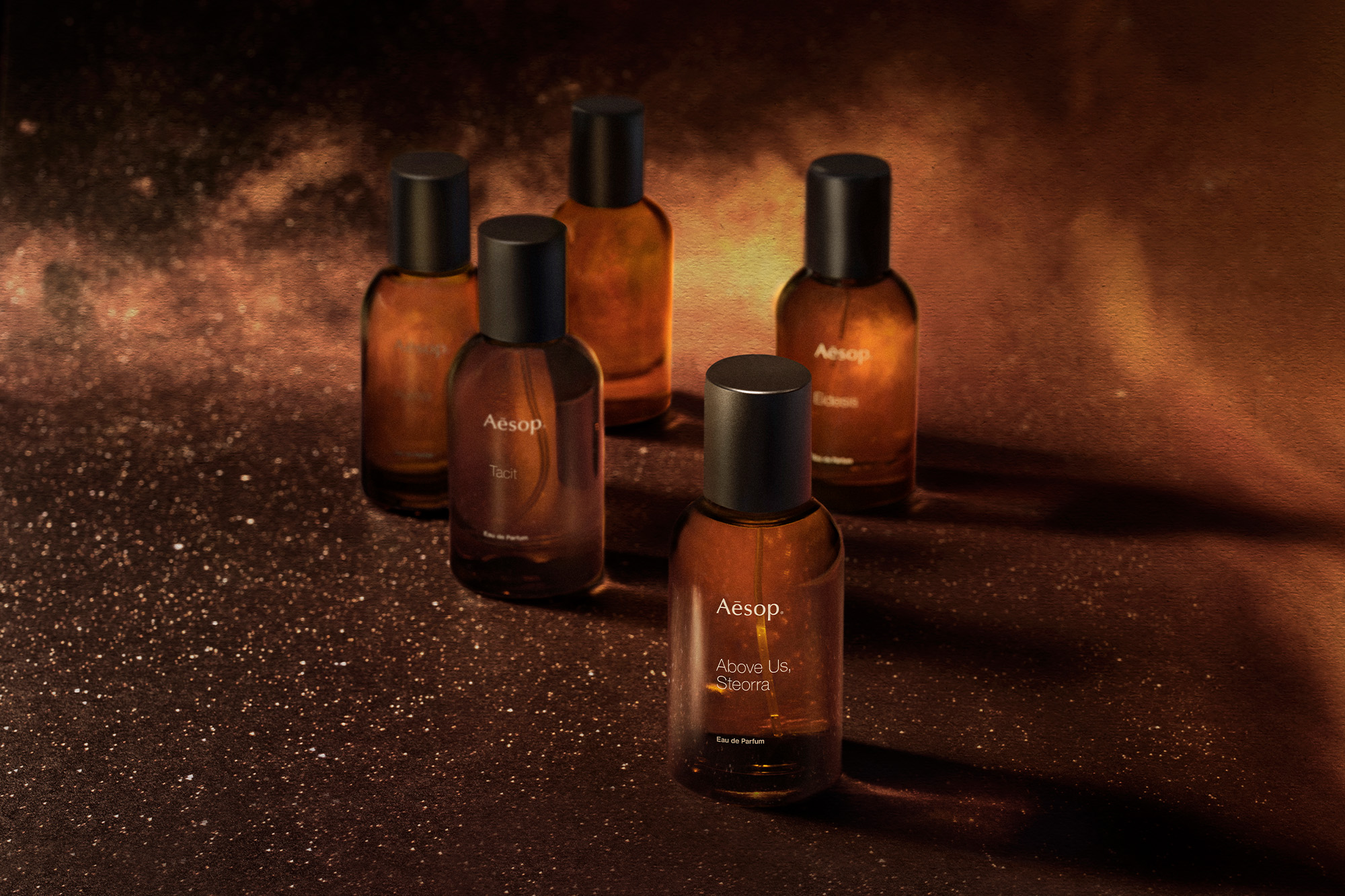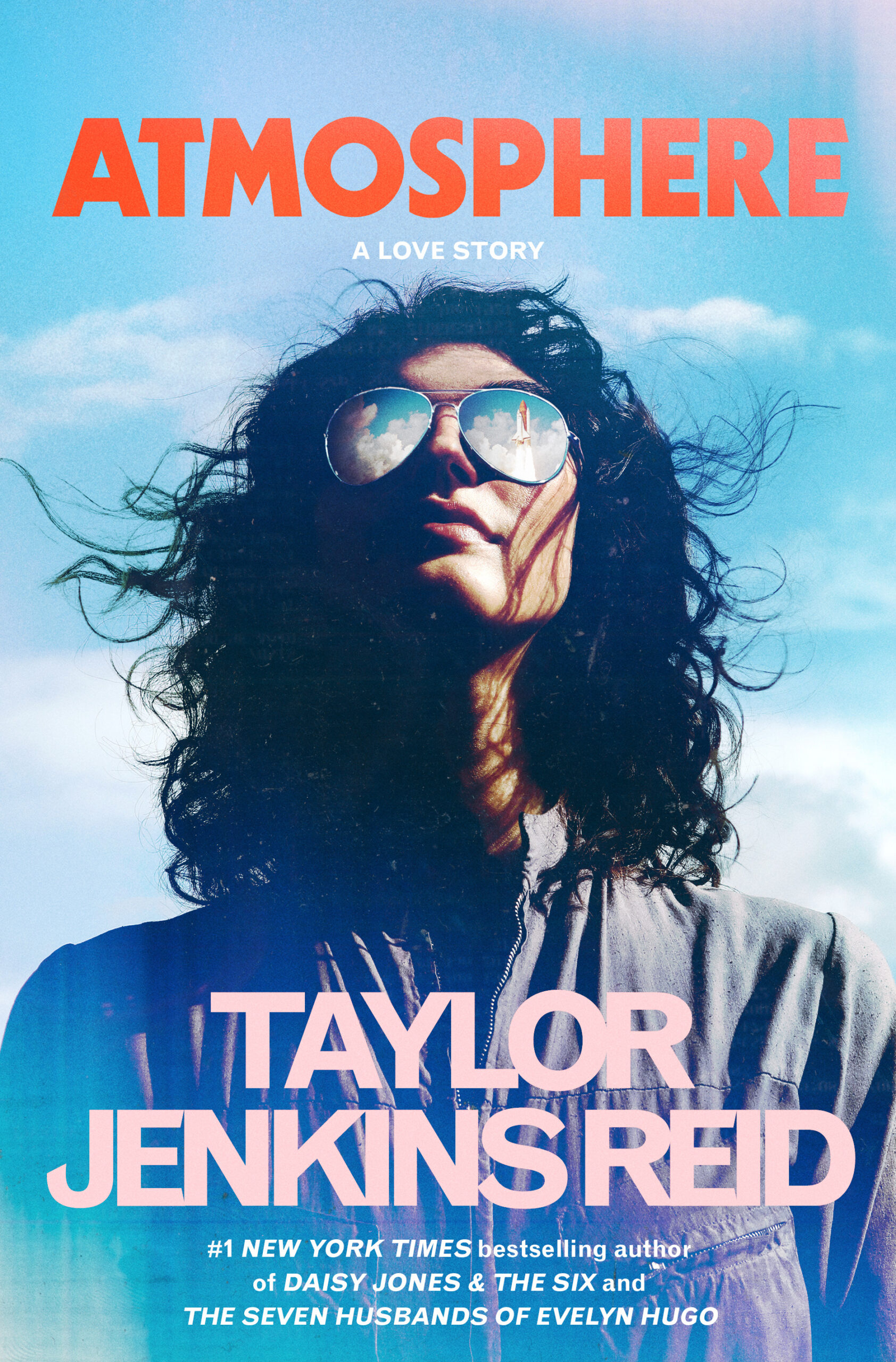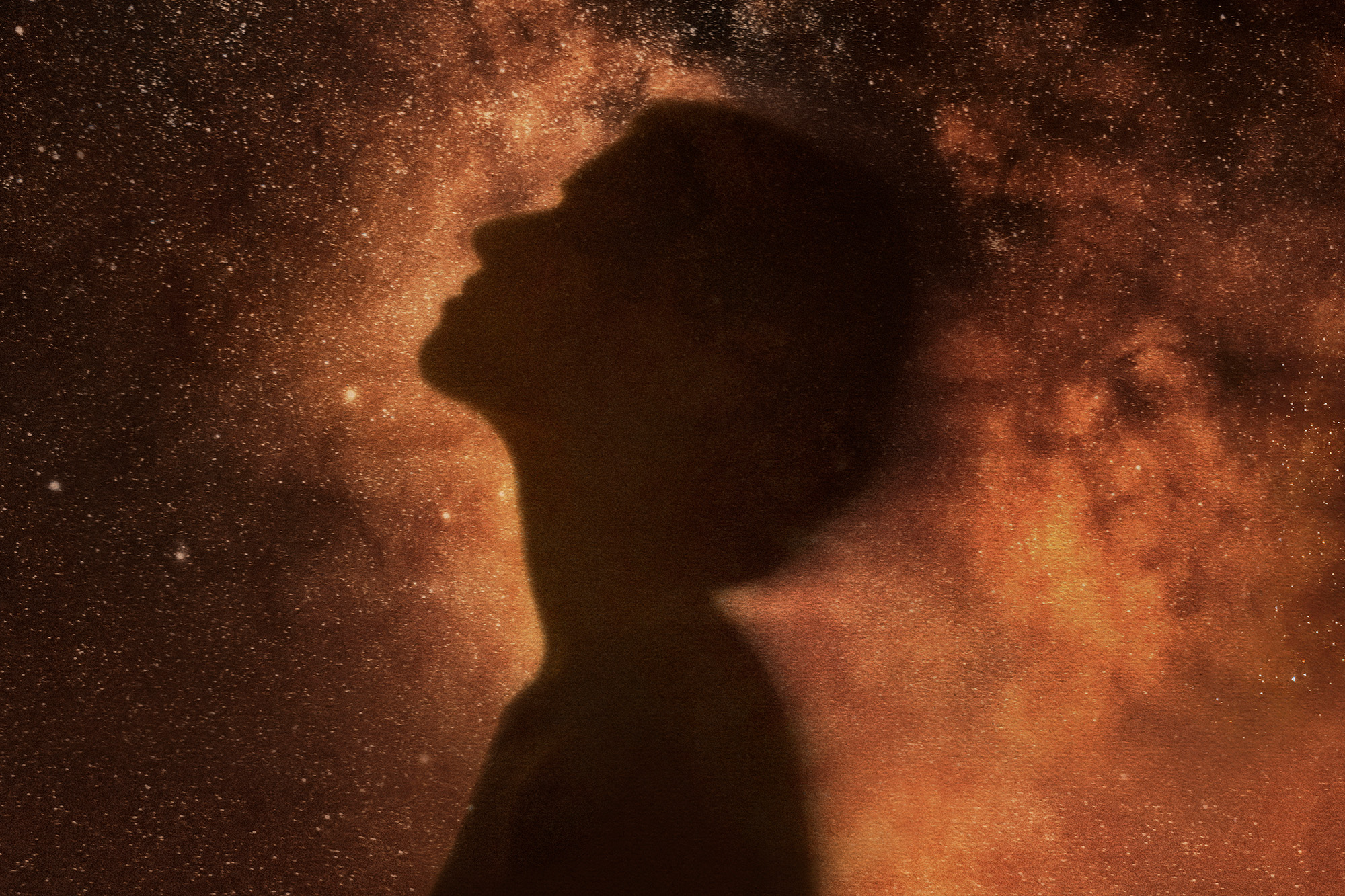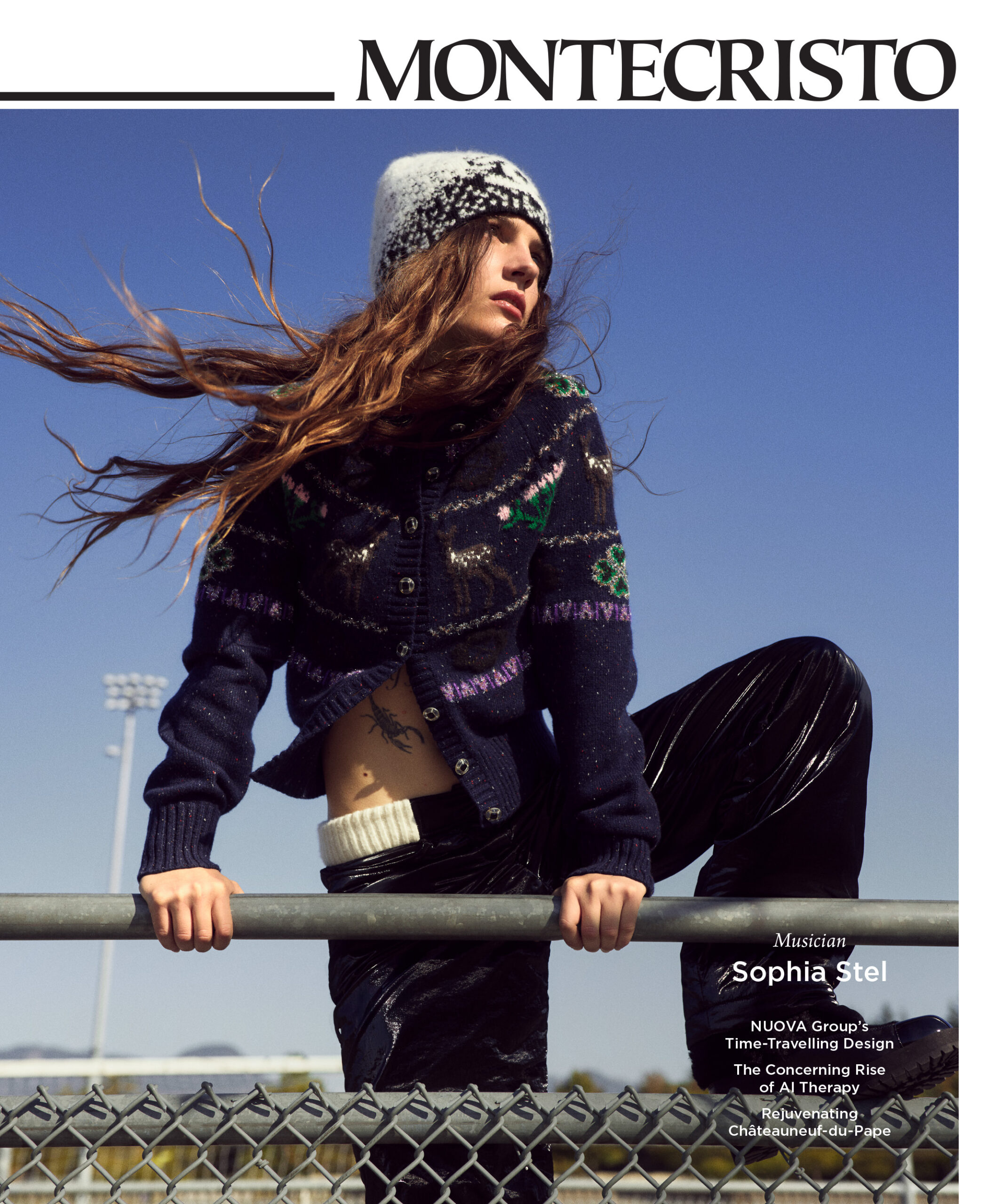Something as lofty as the night sky is an unconventional starting point for fragrance, an intimate, sensual product that has traditionally appealed to our baser instincts. Consider Shalimar, the legendary 1925 fragrance that creator Jacques Guerlain described as reminiscent of the underside of his mistress. But for Aesop’s new Above Us, Steorra Eau de Parfum, perfumer Céline Barel took inspiration from a different kind of heavenly body, aiming to create a celestial amber that evoked the wonder of gazing at the night sky. Capturing the incandescence of a shooting star in a bottle, Above Us, Steorra is just one example of how cultural creators are increasingly drawing inspiration from the mysterious heavens above.
In fashion, the moon, sun, and stars impart a mysterious, deity-esque grandeur to the wearer. At the fall/winter 2025-2026 Schiaparelli haute couture show, titled “Back to the Future,” creative director Daniel Roseberry reinterpreted some of his predecessor’s astro-inspired hits, including the motif from her Apollo de Versailles cape, which was made of tulle embroidered with silver pearls, sequins, and rhinestones, fringed at the bottom with black horsehair. In another look, a constellation necklace composed of three layers of silver metal stars and rhinestones was worn with a slanted black bustier dress. The notion of world-building is an ongoing north star for Roseberry, who had this to say about Schiaparelli’s spring 2022 collection: “We kept saying ‘Planet Schiaparelli’: I wanted to make something that looked totally unlike anybody else. Nothing else should look like this.”

Similar to its couture cousin, haute joaillerie is also infatuated with the mysteries of the skies above. For its 2024 Blue Book high-jewellery collection, titled Tiffany Céleste, Tiffany’s & Co. chief artistic officer Nathalie Verdeille drew from designer Jean Schlumberger’s archival repertoire of cosmic creations. With names like Shooting Star, Constellation, and Star Burst, each chapter featured pieces that glittered like the night sky. Equally enchanting was the recently unveiled Apollo collection, a reimagining of Schlumberger’s 1957 Apollo clip in a gold, platinum, and diamond burst.
The discourse between jewellery and the sky above is the subject of Cosmic Splendor: Jewelry From the Collections of Van Cleef & Arpels, an exhibition at the American Museum of Natural History in New York until January 4, 2026. It features more than 60 pieces celebrating the cosmos, something the maison has been doing for more than a century. “This theme has been dear to Van Cleef & Arpels since its foundation, as our archives mention the sale of ‘one star brooch in pearl and diamonds’ as early as 1907,” says Alexandrine Maviel-Sonet, patrimony and exhibitions director of Van Cleef & Arpels. As technology advanced, these fanciful designs became rooted in reality, such as the pendant created to celebrate the 1969 moon landing featuring the lunar landscape with a ruby marking the landing spot.
Science fiction writers have been mentally flying through space since the 1600s, when Cyrano de Bergerac wrote the novel L’Autre Monde ou les États et Empires de la Lune. Today, what happens in orbit provides fodder for more mainstream authors as well. In her 2024 Booker Prize-winning novel Orbital, Samantha Harvey tackled the topic of space through a contemporary lens and with the care of a nature writer. “I wanted to write about our human occupation of low Earth orbit for the last quarter of a century—not as sci-fi but as realism,” she said. Bestselling author Taylor Jenkins Reid also turned to space exploration for her most recent novel Atmosphere: A Love Story. Set in a 1980s NASA program, it was inspired by a childhood curiosity about weightlessness.

Historically, a wave of cultural output inspired by the cosmos has been tied to milestone advancements in technology. Take the space race of the 1950s and ’60s giving birth to the now iconic Space Age aesthetic. That era saw the advent of futuristic, never-seen-before looks by Paco Rabanne, André Courrèges, and Pierre Cardin. In interior design, it gifted us with midcentury landmarks such as the Ball Chair, the Panton Chair, and the Tulip Chair, timeless pieces that continue to inspire design visionaries including Giampiero Tagliaferri and Kelly Wearstler.
With the nostalgia of Y2K futurism trending, those who lived through the arrival of the new millennium will remember the nervous excitement brought on by the Y2K bug. The anxiety of this potential catastrophe, not to mention reaching the year of Stanley Kubrick’s chilling 2001: A Space Odyssey, meant that space was once again infiltrating the arts, this time via poppy, cartoon-like designs characterized by the metallics, shiny textures, futuristic shapes, and fabrics perfectly captured in music videos such as Britney Spears’s Mars-themed “Oops!…I Did It Again” or TLC’s “No Scrubs.”
The latest wave of interstellar infatuation can be traced to the increasingly real possibilities of space exploration. With Jeff Bezos’s Blue Origin launching its first space tourists in 2021, it’s no surprise that the zeitgeist has once again followed its gaze upward. But where past eras of technological advancement offered consumers an aspirational quality, our current fascination with the unknown of space seems to function more as an escape from the hectic, often bleak realities here on Earth.
When accessing natural beauty feels increasingly elusive, it makes sense that artists are looking to the otherworldly to capture a feeling of optimism and discovery. When in doubt, look up.
Read more stories about the stars.









